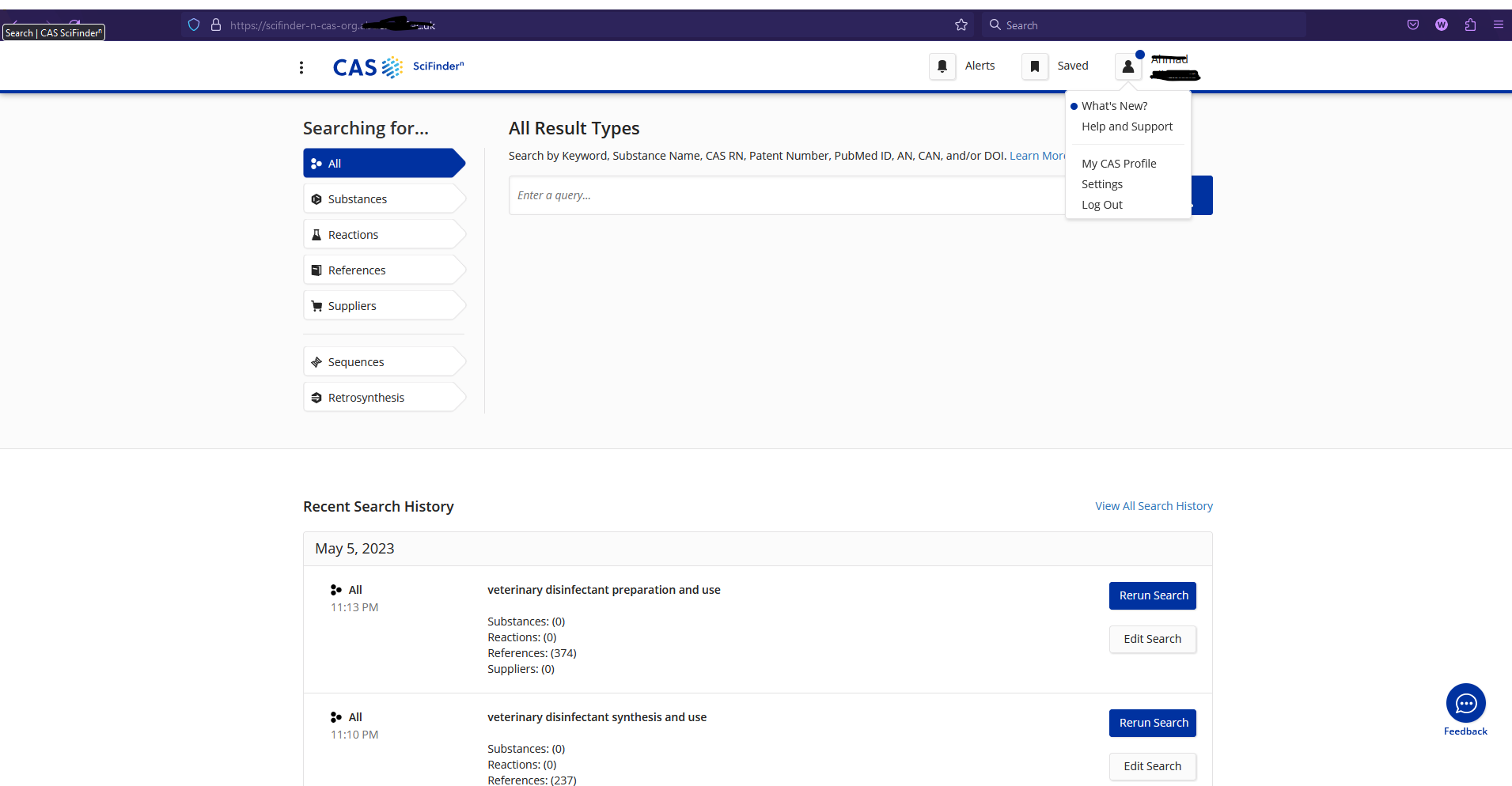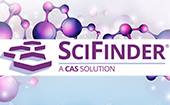
معرفی پایگاه SciFindern
سایت سای فایندر بزرگترین مرجع و بانک اطلاعاتی در مورد چكیدههای شیمی و پزشكی و زیست دارویی می باشد. یکی از شناخته شدهترین خدمات این نهاد شماره ثبت CAS است که جهت شناسایی مواد شیمیایی استفاده میشود. دفتر اصلی CAS هم اکنون در ایالات متحده آمریکا واقع شده است.
دسترسی به پایگاه اطلاعاتی Sci-Finder ؟
SciFinder یک پایگاه داده با اطلاعات کتابشناختی و شیمی در زمینه های شیمی و مهندسی شیمی است. در آن میتوانید نام نویسنده، موضوعات تحقیق، شناسههای مواد، ساختارهای شیمیایی و واکنشهای شیمیایی را جستجو کنید. این شامل ادبیاتی از سال 1907 تا کنون است. با ترسیم ساختارهای شیمیایی، زیرساختها یا واکنشها در ویرایشگر، خود را از سایر پایگاههای داده متمایز میکند.

What Is SciFinder?
CAS SciFinderⁿ provides solutions to challenges encountered in both chemical and biological research.
Learn key benefits that CAS SciFinderⁿ offers to scientists across multiple stages of research and development efforts, including patentability, synthesis, and relevant reference searching.
SciFinder is a database with bibliographic and chemical information in the fields of chemistry and chemical engineering. In it, you can search for author names, research topics, substance identifiers, chemical structures, and chemical reactions. It contains literature from 1907 until now. It differentiates itself from other databases by allowing you to search for information by drawing chemical structures, substructures, or reactions in the editor.
CAS is a division of the American Chemical Society. It is a source of chemical information. CAS is located in Columbus, Ohio, United States.
Search for a specific topic
You can search SciFinder with natural language phrases. This means that you can type a sentence or question in the search box. For instance, you can search with the sentence: “Absorption of iron in humans”. Tip: use two or three concepts to start your search and refine with additional terms based on your search results.
SciFinder does not use Boolean operators (AND, OR, NOT). SciFinder ignores words like OF, IN, AS, AT, FOR, FROM, THE, TO and WITH.
Plurals, abbreviations and difference in spellings
SciFinder searches automatically for most plurals and also translates some abbreviations and UK/US spelling variations. For instance, for the term NMR SciFinder retrieves NMR and “nuclear magnetic resonance”, color also retrieves colour etc.
“Keep me Posted” (alerts)
An alert is called “Keep me Posted” in SciFinder. How to set up an alert for your topic:
Go to your results list
Click on “Create Keep me Posted Alert”
Enter a title for your alert and, this is optional, a description
Change or accept the default duration (default is 1 year)
Specify the frequency: you can receive an alert once a week or once a month
Click on “Create”
Export references to EndNote or Mendeley
By default SciFinder exports all retrieved references, but you can change this by selecting (marking) references in your results list.
Click on “Export”, and a popup opens on your screen
Choose: All, Selected or Range
Select Citation export format (RIS)
Click on Export
Another popup opens. Here you can choose to export to EndNote or to Mendeley desktop
Click “OK” and the references are directly imported into the reference manager of your choice
ویدیوی آموزشی SciFinder
در ویدیوی اموزشی سای فایندر زیر ، راهنمای جامعی از جستجو ، کار با Structure Editor ، کار با بخش Reaction و …اموزش داده شده است.
SciFinder Tutorial: The Most Comprehensive Chemical Literature Database
You can search by topic, author, and substances by name or CAS Registry Number, OR use the editor to draw chemical structures, substructures, or reactions.
نحوه کار با SciFinderⁿ
https://www.cas.org/support/training/scifinder-n



